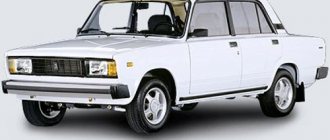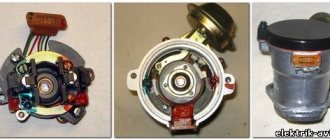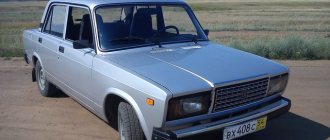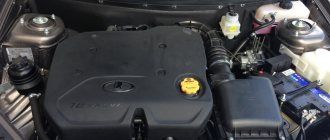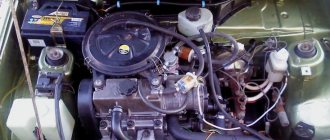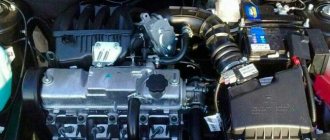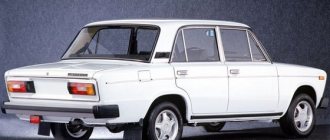Category: ENGINE
- Making a motor
- Description of the GAZ-53 engine
- Engine GAZ 53 technical characteristics
- Gas 53 engine maintenance
- Modification of the Gas 53 engine
It is not surprising that the products produced on the conveyor belt of the Gorky plant are known to every resident of our region, and the GAZ 53 engine personifies the era of traction devices used in freight transport. Cars of this class were considered the “backbone” of the country’s vehicle fleet, traveling around the remote nooks and crannies of the homeland, the products “faithfully” fulfilled the tasks assigned to them.
Mass production of the power plant started in 1964; subsequently, the engine received the same name as the machine. The engine is equipped with eight cylinders with a “V” layout, in comparison with competitors, it is devoid of a number of shortcomings, which influenced the further fate of the unit. The device is reliable, durable, with an increased power reserve; it is no coincidence that the motor lasted on the market for more than thirty years (until 1993). Even today, some of the products continue to be used, and the plant produces components, keeping the device in operation.
GAZ-53:
Short description
The ZMZ-511 engine and its modifications are used for installation on medium-duty trucks, such as GAZ-53, GAZ-66, GAZ-3307. ZMZ-511 is a modernized ZMZ-53a, 53-11. The ZMZ-511 uses an untuned single-tier intake manifold, which leads to flow pulsations that negatively affect mixture formation. Cylinder heads with highly turbulent combustion chambers and helical inlet ports are used. These heads provide a compression ratio of 7.6:1, versus 6.7:1 for older engines. The ZMZ-513 engine is a modification of the 511 designed for more difficult operating conditions (for military equipment, for transporting goods in rural areas and in other difficult conditions). The engine has a number of design differences, such as a specially shaped sump for the drive axle, shielded design of electrical components, etc. The power and torque characteristics are the same. The ZMZ-513 engine is distinguished by its heavy weight - 275 kg.
How much do individual parts of the GAZ-53 weigh?
Individual parts of the car have different weights. Let's consider how much these parts weigh.
Engine without gearbox GAZ-53
The engine of the GAZ-53 is eight-cylinder, V-shaped, with 16 valves, volume 4.3 liters. Engine power - 116 hp. The diameter of the standard piston is 92 mm. The block and head are made of aluminum.
The engine has a specific sump and large air and oil filters. This engine was installed not only on the GAZ-53, but also on the GAZ-66, GAZ-3307, ZIL-130, etc. The weight of the engine is 275 kg.
The car engine can also be gas. The gas cylinder is mounted on the bottom of the frame.
Body GAZ-53
GAZ-53 was produced with bodies of various modifications:
- dump truck;
- onboard;
- tank;
- van;
- special purpose.
In the base model of the car, the theoretical body weight is 3200 kg. The most common models have different body weights.
Body weight of various GAZ-53 models
| Model | Years of manufacture | Weight in kg |
| GAZ-53-07 | 1974 – 1984 | 3250 |
| GAZ-53-19 | 1984 – 1990 | 3435 |
| GAZ-53-27 | 1984 -1990 | 3770 |
Frame without axles GAZ-53
The truck frame is made with seven cross beams. At the front, a forged steel front axle is secured with springs. At the rear, the frame is also supported by springs on the drive axle beam.
Interesting! Technical characteristics of KamAZ-43118 in numbers and modifications
The weight of the frame in trucks of various modifications ranges from 215 to 300 kg.
Bridge GAZ-53
The GAZ-53 truck has a rear axle that is driven. Both the front and rear axles are mounted on springs. There are shock absorbers on the front axle. On the rear axle of the machine there is a double-slope galvanized sheet. It is needed to install four wheels.
Weight of GAZ-53 axles:
- front axle weight - 287 kg;
- rear axle weight - 268 kg.
How much the GAZ-53 rear axle weighs can be said for sure only by knowing the year of manufacture of the car and the model.
Radiator GAZ-53
There is a whole line of radiators for different modifications of this car. They can be tubular-tape, copper-brass or aluminum. In the GAZ-53-12 cooling system, the radiator is copper-brass and consists of brass tanks located at the top and bottom, vertical brass plates, between which corrugated copper strips pass. There is also a radiator cap and drain cock.
The fan casing is attached to the side posts; they provide rigidity to the structure.
How much a GAZ-53 radiator weighs depends on the model: the weight of different radiator models ranges from 12 to 20 kg.
Cabin GAZ-53
In the GAZ-53, the cabin is mounted on four rubber cushions on the frame. The cabin is two-door, metal, welded. Ventilated through door windows.
The cabin is primed and phosphated to protect against corrosion, and it is painted with enamels for hot drying. The bottom of the cabin is covered with a layer of mastic. The cabin has the following dimensions:
- height – 1350 mm;
- length – 1450 mm;
- width – 1800 mm.
Cabin weight – 200 kk.
Barrel from GAZ-53
The GAZ-53 was equipped with different types of barrels depending on its purpose.
Here are their main characteristics:
| Machine type | Length, mm | Width, mm | Height, mm | Weight, kg |
| Milk tanker | 3200 | 1200 | 1560 | 1300 |
| Vacuum truck | 3400 | 1200 | 1560 | 574 |
| Gasoline tanker | 3400 | 1200 | 1560 | 476 |
The difference in weight is explained by the design features and materials of the barrels.
GAZ-53 gearbox
The gearbox of this car is a very reliable unit. With proper operation and timely oil changes, the gearbox can last up to 500,000 km without major repairs. This distance is greater than from the Earth to the Moon (384,000 km). The box operates stably over a wide temperature range both in Africa (up to +50°C) and in Yakutia (up to -70°C).
The weight of the GAZ-53 gearbox is 56 kg.
Experienced drivers said that they changed the gearbox alone. Knowing how much a GAZ-53 box weighs, you can imagine how strong they were.
Characteristics of the ZMZ-511/513 GAZ-53, 3307, GAZ-66 engine
| Parameter | Meaning |
| Configuration | V |
| Number of cylinders | 8 |
| Volume, l | 4,254 |
| Cylinder diameter, mm | 92 |
| Piston stroke, mm | 80 |
| Compression ratio | 7,6 |
| Number of valves per cylinder | 2 (1-inlet; 1-outlet) |
| Gas distribution mechanism | OHV |
| Cylinder operating order | 1-5-4-2-6-3-7-8 |
| Rated engine power / at engine speed | 92 kW – (125 hp) / 3400 rpm |
| Maximum torque/at engine speed | 294 N•m / 2000-2500 rpm |
| Supply system | Carburetor K135 |
| Recommended minimum octane number of gasoline | 76 – 80 |
| Environmental standards | Euro 0 |
| Weight, kg | 262 |
Maintenance of GAZ 53 and ZAZ 53 engines
The duration of operation of these motors depends on compliance with the rules of care for working mechanisms and systems. The list of maintenance work for power units includes the following items:
- Checking the fastening of the working cylinders.
- Cleaning valves from carbon deposits and other harmful deposits.
- Adjusting the gaps between valves and rocker arms of the gas distribution mechanism.
- Checking the engine oil level using the dipstick.
- Periodically change the oil and oil filter in the engine lubrication system.
- Daily monitoring of coolant level. If the radiator is filled with water, its level should not reach 40 mm to the edge of the neck; when using non-freezing liquid in the cooling system, this size is 70 - 80 mm.
- Regular cleaning and flushing of power system components (carburetor, fine filter, float mechanism, etc.).
Cylinder block
The ZMZ-511 cylinder block is cast from aluminum alloy. Sleeves with bottom fixation are installed on the engines, they are pressed with a head on top, and the sleeves are sealed with copper rings from below. To improve the rigidity of the block, its lower part is located 75 mm below the crankshaft axis.
| Parameter | Meaning |
| Material | Aluminum alloy AL-4 |
| Cylinder diameter, mm | 92,00 |
| Intercylinder distance (distance between the axes of adjacent cylinders of the block), mm | 123,00 |
| Diameter of boring of crankshaft supports (for main bearings), mm | 67,0 |
| Weight, kg | 44 |
The material of the sleeves is special alloy cast iron. The height of the sleeves is 153 mm. Bore diameter – 100 mm.
Piston
| Parameter | Meaning |
| Diameter, mm | 92,00-91,988 |
| Compression height, mm | 51,0 |
| Weight, g | 565 |
The piston pin has an outer diameter of 25 mm, an inner diameter of 16 mm.
The Soviet Union produced many nice trucks. But among them all, the GAZ-53 stands out. Serial production of the 53rd GAZ began in 1961 and ended in 1993. During the entire existence of this model, GAZ 53 trucks were equipped with internal combustion engines (ICE) from the Gorky Automobile Plant and the Zavolzhsky Motor Plant.
An example of a classic GAZ 53 truck
Making a motor
The origins of the GAZ-53 engine began in 1959. During this period, work began on calculating the unit that would replace the GAZ-51. The latter was very outdated at that time. In addition, the valves located at the bottom did not allow the engine to realize its potential; tuning and repair were complicated by design flaws. The cast iron from which the load-bearing elements were cast made the product clumsy and increased its weight. The prerequisites for an imminent design change are obvious and the work was urgent. The day before, the designers of the engine plant mastered the aluminum casting method, then this was considered a breakthrough and made it possible to apply the technology to a new product.
The first engine installed on the GAZ-53 car was a unit labeled “511”, this happened in 1961. Subsequently, more than one experimental engine model was installed on the car, but the units could not take root. Thus, a striking example of “engineering thought” is the GAZ-53F engine with pre-chamber ignition, other models: GAZ-53A (12). A number of modifications have been created that have not found mass application, but are popular among those who like to tune the GAZ 53 engine. In addition, there are engines whose use goes beyond the scope of GAZ products. For example, 53 is found on cars: UAZ and Gazelle. The year 1993 was the final stage for the engine, since the brand ceased to be produced. Nevertheless, the plant operates a workshop that produces spare parts for engines that have not ceased operation.
Engine GAZ-53:
From the history
From the fall of 1961 to January 1967, Gorky produced the GAZ 53 with the index “F”; the GAZ 53F was powered by the six-cylinder GAZ 51 engine. Although the engine was somewhat improved at that time, it had significant drawbacks.
The internal combustion engine was already obsolete by that time. The lower arrangement of the valves gave low efficiency and low power; the engine was inconvenient to maintain and repair. Even adjusting the valves was a problem, and it took a lot of time to adjust them. The cast iron structure had considerable weight, the motor had a relatively short mileage. Everything was moving towards replacing the outdated design with something more acceptable.
Example of an engine for GAZ 53
At the end of 1958, the Trans-Volga enterprise mastered the casting of aluminum alloys, and the plant began to develop the production of new light metal parts.
At the time, this was a big step forward in the automobile industry.
First, ZMZ designed a V-shaped 8-cylinder engine for the GAZ 13 “Chaika” (ZMZ 13). The engine had a power of 195 horsepower and ran on high octane gasoline (Ai-93 or Ai-95). Almost immediately, the ZMZ 41 internal combustion engine (140 hp) was developed. ZMZ 41 ran on “seventy-sixth” gasoline. This engine was installed on the Volgas of the special services.
This is what a V-shaped 8-cylinder internal combustion engine looks like
New engine for GAZ 53A
In 1964, the Zavolzhsky Motor Plant, based on the ZMZ 41 engine, developed a new engine that was equipped with the GAZ 53. It should be noted that six-cylinder internal combustion engines were no longer installed on the second generation of “lawns” (GAZ 53A), and in the future only “fifty-thirds” were equipped with V-shaped 8-cylinder engines.
The new internal combustion engine received the ZMZ index 53A. Just like the ZMZ 13, the engine received an aluminum block and two cylinder heads (cylinder heads) made of the same metal. The ZMZ 53A had a number of clear advantages over the outdated six-cylinder internal combustion engine:
- The engine weighed less;
- It had more power and cylinder capacity;
- Fails less often;
- It was more convenient to repair and maintain.
Characteristics of ZMZ 53A
Starting from 1966, the ZMZ 53 engine was installed as standard on GAZ 53A and GAZ 53 12 vehicles. It had an overhead valve arrangement, and the model used a K 126B carburetor. Later a different carburetor was installed (K 135)
Unlike the ZMZ 41, the 53rd engine has a smaller cylinder volume and piston stroke. Some people claim that the parts of these internal combustion engines are interchangeable, but this is absolutely not true. The engines even have different cylinder blocks, not to mention the piston group, crankshaft and cylinder head. The difference in the blocks is that the seats for the cylinder liners are of different diameters, so replacing one block with another will be extremely problematic.
Modification of the Gas 53 engine
Since the GAZ-53 power plant is unpretentious, with an increased resource, craftsmen often use the engine for tuning. Additionally, the work is stimulated by the availability of the price of the device and spare parts. For this reason, owners prefer to install the engine on other cars, such as Gazelle and UAZ.
It seems that the engine is not suitable for such cars in terms of weight and dimensions. But, thanks to the use of aluminum, the motor actually weighs relatively little (230-270 kg). This factor does not negatively affect the chassis; the engine fits in the space under the hood and is compatible with these cars. To adapt to changing conditions, some elements in the design of products are changed: fastenings, cooling, etc.
A popular modification is the installation of an injector on the power unit. The procedure requires knowledge and skills, since it is difficult to adjust the engine to the changed parameters. A standard carburetor is not able to make the consumed mixture of improved consistency, so an injector is relevant in this case. By the way, attempts to install the product on the engine were also made by the plant. Thus, in the eighties, modifications of the “504.10” and “5232.10” engines received fuel injection as standard. The injection engine was distinguished by increased power, efficiency, and an increased range of settings. However, these engines did not make it into serial production and most users know nothing about the modifications.
Source
Modifications of GAZ 53 engines
Many different modifications were created based on the ZMZ 53A engine. Changes in the design suggested some improvements, or were intended to make it possible to install the internal combustion engine on other equipment. For example, the ZMZ 66 06 engine had a compression ratio of 7.6 and its power was increased to 120 hp.
Nowadays, the Zavolzhsky Motor Plant still produces engines for the GAZ 53 and subsequent generations (GAZ 3307, GAZ 3308). ICEs of this type are also used on buses of the Pavlovsk Bus Plant.
Engine diagram for GAZ 53 truck
- ZMZ 66 06, piston stroke/diameter 92x80 mm, volume 4.25 l, power 120 hp, compression ratio 7.6;
- ZMZ 511, piston stroke/diameter 92x80 mm, volume 4.25 l, power 125 hp, compression ratio 7.6;
- ZMZ-523, piston stroke/diameter 92x88 mm, volume 4.68 l, power 130 hp, compression ratio 7.6.
The ZMZ 513 engine is a modernized version of the ZMZ 66 06 engine, ZMZ 5233.10 is installed on GAZ 3307 and GAZ 3308 vehicles, the ZMZ-5234.10 model is intended for PAZ buses.
Area of use of GAZ 53 engines today
GAZ 53 trucks are still in active use, many of them have diesel engines. However, there are also cars that run on their own power unit. The main disadvantages of outdated models:
- due to the excessive efficiency of the GAZ-53 gasoline engine, its technical characteristics do not meet current comfort requirements;
- The outdated design of the cabin is not heated in winter;
- the seats are unusually hard and uncomfortable;
- The steering wheel is not equipped with power steering.
Most often, such machines are used in conjunction with specialized add-ons:
- tanks for various liquids;
- sewage disposal devices;
- van bodies;
- communal facilities;
- fire equipment, etc.
Main malfunctions of ZMZ 53 engines
Like any other engine, the ZMZ 53 has its weaknesses. Little depends on the modification; all internal combustion engines have similar characteristics.
- insufficient oil pressure in the lubrication system;
- deformation of the intake manifold (“spider”);
- oil leak from the rear main bearing;
- increased oil consumption;
- Under heavy loads, scuffing of the crankpin journals of the crankshaft occurs.
Nevertheless, the engines of this series are quite durable. If you consider the kind of motor oil that is sometimes poured into them, one can only be surprised at the tolerance of the internal combustion engine. Not every foreign-made engine can withstand such abuse.
You often hear from drivers of lawn cars, “That’s it, the engine is running out.” So, it can “end” for almost years. Without pressure, with a smoking piston and high oil consumption, the “lawn” drives for a long time. Very often, and sometimes for a long time, something knocks on “Gazonov” engines, but what exactly is not clear even after disassembling the unit. Surprising but true.
How to replace lubricant in a GAZ 53 engine
When carrying out maintenance of the GAZ 53 power unit, a mandatory item is changing the engine oil. How much oil is in the GAZ 53 engine? The answer to this question can be found in the vehicle's operating instructions.
Important: If there is no accompanying documentation, you can take advice from experienced auto mechanics. For older GAZ 53 engines with a volume of 3.5 liters, at least seven liters of working material must be poured into the lubrication system. 8 liters of lubricant are poured into the ZMZ 53 engine.
Depending on the conditions in which a particular vehicle operates, the oil change interval ranges from 5 to 7,000 kilometers.
Recommended brands of lubricants for U-shaped eight-cylinder engines GAZ 53 and ZMZ 53:
- Gazpromneft (mineral water 10W30, 15W, semi-synthetic 10W40 - for summer; synthetic 5W40 - in winter frosts.
- Lukoil (with similar viscosity indicators).
Correct engine maintenance
The engine itself is good and does not cause any complaints; the main thing is to maintain its technical condition.
This is what the internal combustion engine looks like for a GAZ 53 car
When carrying out maintenance, the cylinder head must be tightened.
But these are the first three technical inspections, then the frequency can be increased and the cylinder head can be tightened after each TO-2.
Don't forget about the temperature.
To help your engine last longer, replace the piston rings as soon as necessary. The car itself will tell you that it is time to replace the piston rings. In this case, after every 100 km. mileage the oil will decrease by about 400 grams. If the oil pressure in the system has dropped, then the problem is in the crankshaft main bearing shells, which also need to be replaced immediately.
Engine for GAZ 53 cross-section
Checking the technical condition of the internal combustion engine ZMZ 53
Some indicators can be used to judge the technical condition of the engine. These indicators are:
- oil consumption per 100 (1000) km;
- oil pressure values at idle and medium crankshaft speeds;
- compression in internal combustion engine cylinders.
Oil consumption is checked by level with a dipstick on a cold, unstarted engine. If consumption exceeds 0.4 liters per 100 km, the engine needs to be repaired. But the internal combustion engine can also be repaired with less oil consumption, especially when there are no leaks on the engine.
Oil pressure is controlled by a dial indicator and a warning lamp on the instrument panel. Sometimes sensors are faulty. Accurate readings can be obtained using a control pressure gauge. The minimum pressure at idle speed of the internal combustion engine should not be less than 0.5 kg/cm², at medium speeds this figure should not fall below 1 kg/cm². If the values are lower, the engine is sent for repair.
Compression in internal combustion engine cylinders is measured with a compression meter. This operation must be carried out by two people. Compression is measured with the spark plugs turned out, the throttle valve fully open, on a good battery and the power supply to the high-voltage wires is turned off. Good compression on ZMZ 53 is considered to be 7.5 kg/cm².
How much does a GAZ-53 weigh for scrap metal?
The price of ferrous and non-ferrous scrap metal varies by region. But old GAZ-53 trucks rusting in garages or just under the fence are sometimes sold at such a price that by buying this “veteran” and selling it for scrap metal, you can make a good profit.
The price of scrap metal now fluctuates around 28 rubles. per kg. The GAZ-53 truck weighs about 3 tons. Of course, this is not the pure weight of the metal. It contains about 65-70% metal, on average 2.7 tons. Thus, if we sell all the metal from this truck for scrap metal, we get:
2700x28=75,600 rub.
There are many advertisements online for the sale of GAZ-53 for 50, 60 thousand rubles. In other words, they are sold at a price lower than scrap metal. Even if the car is not running and you have to use a tow truck, it may make sense to consider this break-in option.
Dump truck
The GAZ-53 dump truck has the following characteristics:
| Cab length | 6.4 m |
| Cabin width | 2.47 m |
| Cabin height | 2.2 m |
| Load capacity | 3.5 t |
| Curb weight | 3.75 t |
| Fully loaded vehicle weight | 7.4 t |
| Ground clearance (clearance) | 0.265 m |
| Wheelbase | 3.7 m |
| Fuel consumption per 100 km, at a speed of 40 km/h | 24 l |
| Tire size | 8.25-20 inches |
| Rated power of internal combustion engine | 115 hp |
| engine's type | Carburetor |
| Engine cylinder compression ratio | 7,6 |
| Steering | Worm-type steering mechanism, without power steering |
| Number of seats in the cabin | Two, including driver |
How much a GAZ-53 body (dump truck) weighs depends on the specific type of body.
If we assume that there is 60% metal in the dump truck, for scrap metal we will have:
3370x0.6=2250 kg
2250x28=63000 rub.
Onboard
The characteristics of the onboard GAZ-53 are slightly different from the dump truck:
| Cab length | 6.395 m |
| Cabin width | 2,380 m |
| Cabin height | 2.2 m |
| Load capacity | 4 t |
| Curb weight | 3.2 t |
| Fully loaded vehicle weight | 7.2 t |
| Ground clearance (clearance) | 0.265 m |
| Wheelbase | 3.7 m |
| Fuel consumption per 100 km, at a speed of 40 km/h | 24 l |
| Tire size | 8.25-20 inches |
| Rated power of internal combustion engine | 115 hp |
| engine's type | Carburetor |
| Engine cylinder compression ratio | 7,6 |
| Steering | Worm-type steering mechanism, without power steering |
| Number of seats in the cabin | Two, including driver |
Interesting! Technical characteristics of KamAZ-43118 in numbers and modifications
When selling for scrap metal we will receive:
3200x0.6=1920 kg
1920x28=53,760 rub.
Gasoline tanker
The GAZ-51 fuel truck was very popular in the Soviet Union. Milk tankers, fire engines, and vehicles for transporting other liquid cargo were also produced on this basis.
| Length | 6400 mm |
| Width | 2380 mm |
| Height | 2590 mm |
| Vehicle base length | 3700 mm |
| Ground clearance | 245-265 mm |
| Capacity (volume) of the barrel | 4200-4800 l |
| Vehicle weight without loading | 3250 kg |
| Maximum permitted weight | 7400 kg |
Depending on the year of manufacture and configuration, there are some differences in parameters. You can tell exactly how much a GAZ-53 fuel truck weighs only by knowing exactly the model and year of manufacture.
If we sell a fuel tanker for scrap, we will get:
3250x0.6=1950 kg
1950 x28=54,600 rub.
Engine Specifications
Below are the technical characteristics of the ZMZ 511.1000398 engine for GAZ-53 GAZ-3307 and AI-76
The engine is carburetor, gasoline, with a V-shaped arrangement of cylinders at an angle of 90 degrees and an overhead valve arrangement.
The engine uses cylinder heads with highly turbulent combustion chambers and helical intake ports. All engines use an exhaust gas recirculation system to reduce emissions of harmful substances into the atmosphere. The engines have a clutch housing for a unified gearbox.
- number of cylinders - 8;
- operating mode - 4-stroke;
- compression ratio - 7.6:1;
- working volume, l - 4.25;
- rated power at a crankshaft speed of 3200-3400 1/min, kW (hp) - 92 (125);
- maximum torque at a crankshaft speed of 2000-2500 1/min, N*m (kgf*m) - 294 (30);
- minimum specific fuel consumption g/kW*h (g/l. S.*h) - 286 (210);
- oil consumption for waste, % of fuel consumption - 0.4;
- weight, kg - 262;
- fuel - A-76.
External speed characteristics of the engine.
By complying with all requirements, the GAZ 53 engine will serve you and your children.
Design features of the GAZ 53 and ZMZ 53 engines
- The engine includes cylinder heads with a combustion chamber with increased turbulence, and the intake valve type is screw. This innovation had a positive effect on the compression and efficiency of the power unit.
- The combined lubrication system allows for the highest quality lubrication of rubbing surfaces, helps to increase the performance and service life of working units and parts.
- Due to the presence of an exhaust gas recirculation system in the internal combustion engine, several times less harmful substances are emitted into the surrounding space.
- The cooling system fluid circulates through special lines and channels, providing high-quality heat removal from the hot metal working elements of the internal combustion engine, regardless of the ambient temperature.


